There was a big piece of news announced yesterday at MakerCon. Zach Supalla, CEO of the company formerly known as Spark, announced they’re changing their name to Particle (which makes sense, given the theme of their latest products -- the Electron and Photon).
As Zach put it in a blog post yesterday, “Spark” is a great name for an electronics company, but “unfortunately, lots of other people feel the same way” (we certainly do). We’re no stranger to the ugliness that can arise from companies trying to protect (overreach on?) a trademark, so we’re excited for Particle to escape any similar situations while building on a unique name.
A lot of us here at SparkFun are huge fans of Particle’s product line: the tried and tested Core, the all-new, better/cheaper Photon, and their latest Kickstarter hit the cellular-focused Electron. Many of us have embedded Cores into projects of our own. Nathan and Cody built a Core-based beehive monitoring system for the new SparkFun hive. Joel’s using a Core to monitor his aquaponics setup. The Cores are the perfect tool for reliable, over-the-air, Arduino-like development of connected projects.
As much as we love our Cores, we’re really chomping at the bit to get our new Photons, which seem like they’ll be able to do more than a Core can, at nearly half the cost. The Photon shares the same form factor as the Core -- pinout and all -- but builds around a WiFi/ARM Cortex M3 SoC they call the P0.
Particle's Core (left) and the exciting new Photon. (Images courtesy of Particle.io)
In an effort to make the Photon even easier to play with, we’ve been working on a series of shields that’ll provide the development board with unique features. In all, we’ve got six new Photon shields up for pre-order today, which we hope to get shipping out by the end of June.
The Photon Weather Shield wires up the Photon to humidity, temperature, and barometric pressure sensors, and can also be connected up to our Weather Meter to measure rainfall and wind.
The Photon Battery Shield equips the Photon with a single-cell LiPo battery charger, as well as a LiPo fuel gauge to monitor the remaining power.
The Photon IMU Shield gives the Photon motion-sensing ability by connecting it to an all-in-one 9DOF IMU (a lot like the LSM9DS0). With this shield, the Photon will be able to sense linear acceleration, angular rotation, and magnetic fields.
The Photon OLED Shield connects the Photon up to a blue-on-black OLED. The display is small, but it’s perfect for visualizing IMU data or printing readings from any of the other shields.
The Photon Wearable Shield is perfect for e-textiles projects you want to take to the cloud. Each pin is broken out in radial fashion to holes large enough to wrap conductive thread through a few times, or solder flexible silicone wire to the smaller through-holes.
Finally, no ecosystem is whole without a Prototyping Shield. This simple little board adds some prototyping space in proximity to the Photon’s I/O pins and power buses.
If you can’t tell, we really, really like what Particle’s done with the Photon, and we want the rest of the world -- beginners and experts alike -- to see what we see. So to help educate anyone and everyone who want’s to know a little bit about DIY IoT, we’ll also be releasing the Sparkfun Inventor's Kit for the Photon.
The kit will include enough sensors and other components to build about a dozen projects, each of which maintains the Photon’s focus on IoT. Whether you’re building a browser-button-activated LED, Phant-reporting environment monitor, or an online multiplayer pong game, each experiment will take advantage of the Photon’s Internet-connectivity.
Following the theme of our Inventor’s Kit for Arduino, we’re swapping a development board of our own design into this kit. Instead of the Photon, we’re including our new SparkFun Photon RedBoard, which uses Particle’s Photon P1 module to maintain compatibility with their cloud-based development environment. The Photon RedBoard breaks out each of the Photon’s pins to the Arduino R3 headers, which allows for easier jumper-wiring, and Arduino shield compatibility!
Phew! Product overload. Each of the products listed above are available for pre-order now. They’re on track to be shipping out before the end of June.
If you’re in the Bay Area this weekend, make sure you check out Particle’s booth. We’re honored to be a guest there, while we help demo the Photon and some of our new boards.

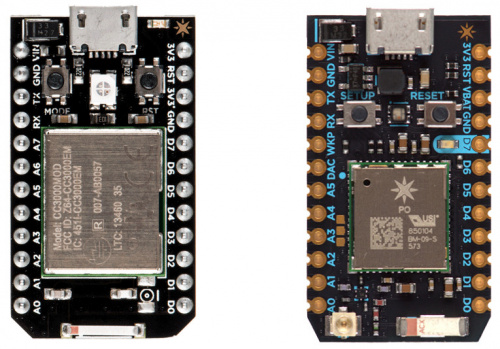
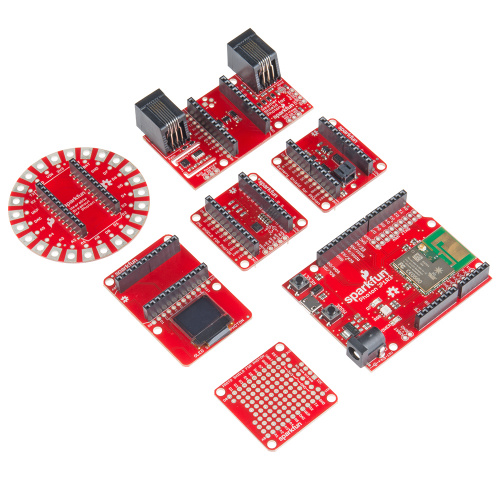
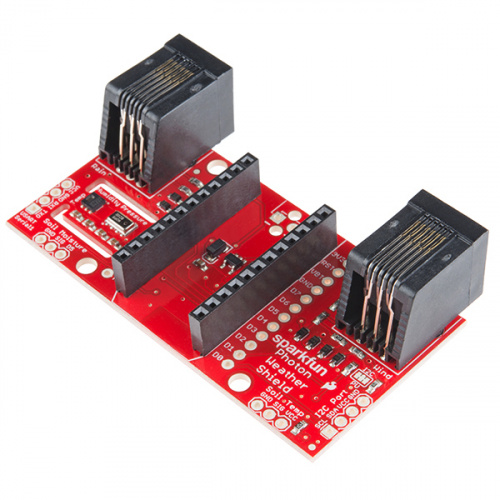
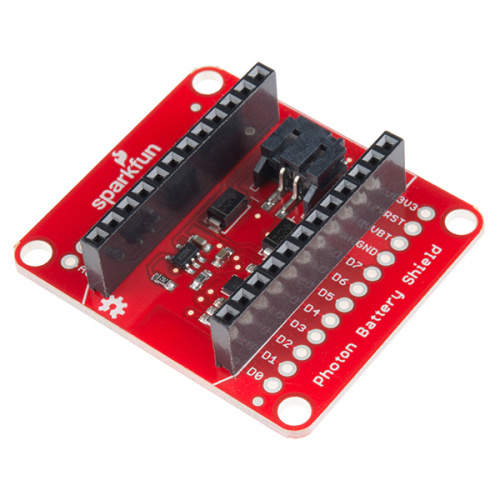
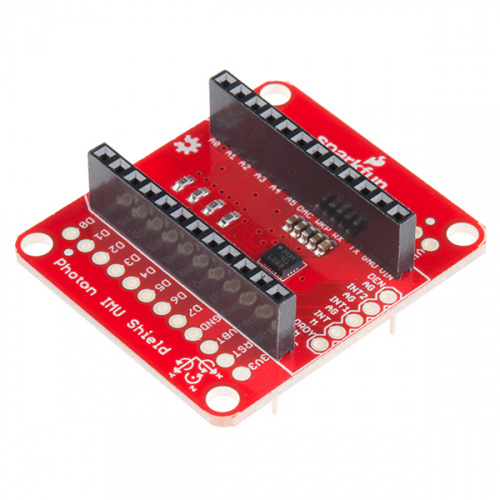

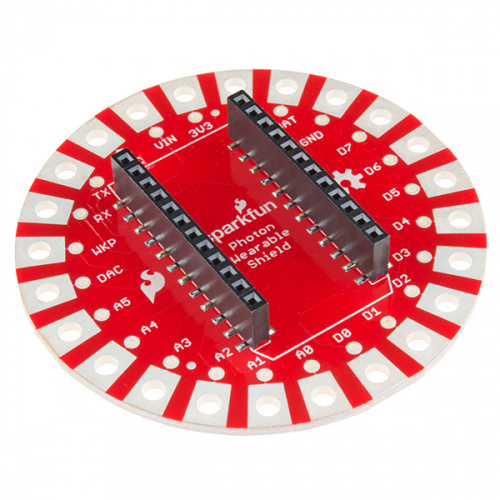
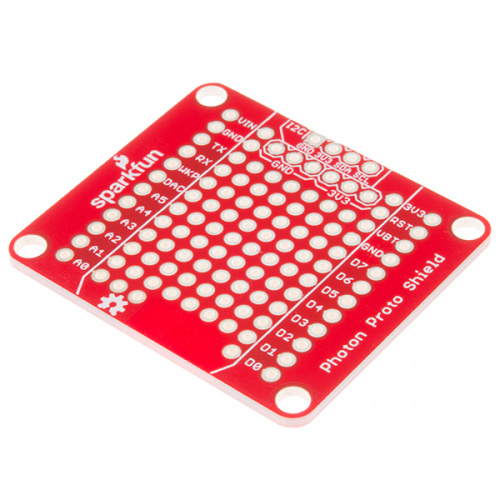
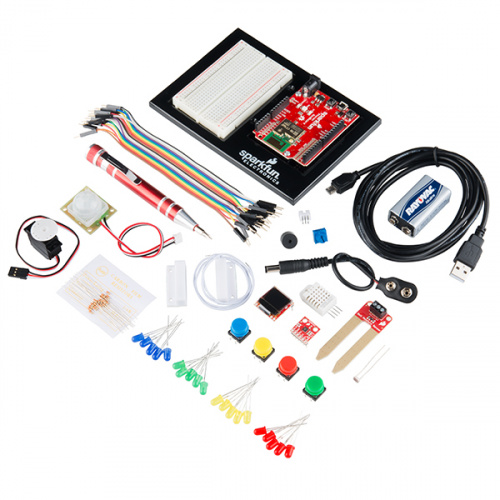
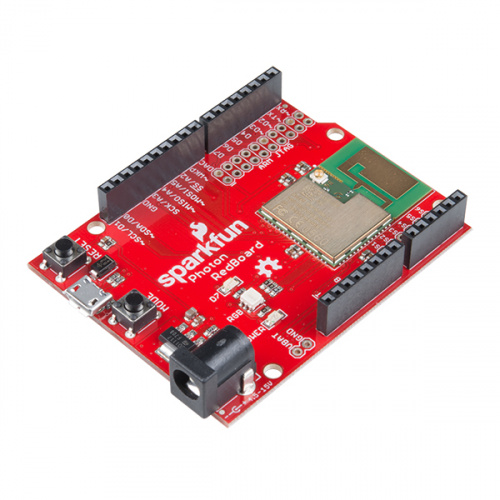






Where can I read more on this beehive monitoring system?
Hah, good question. The project (and the beehive) is still in its infancy, but I'm sure we'll get it documented in a tutorial some time soon.
I am super excited about this. I am already a big fan of the Electron and I am looking forward to getting my Photon and my Bluz's. I think Particle is really onto something here. Cloud connected, cheap, easy IDE, over-the-air updates, IF connectivity out of the box. Now I just need more time for more projects!
I may have missed it, but can it be programmed as if it were any other arduino?
Kinda sorta. The programming language is based off of Wiring, so it looks just like Arduino (
pinMode,digitalWrite, etc). Most code you've written for Arduino will probably work on the Photon with little-to-no modification. The firmware is documented here.Flashing the Photon is done over-the-air, instead of USB. Code is written and compiled in Particle's cloud IDE.
"Cloud IDE" is all I had to read to make a decision that I won't be using this product. While I wish the best for the manufacturer, having your development toolchain rely on the existence of the company long after you've purchased the hardware is too scary.
It's like the whole "Electric Imp" thing all over again.
If this is something you're actually interested in, it's your loss not to do a little more research into what you can do with this thing. As others have stated, you can easily bypass the cloud IDE, and there aren't a lot of other devices like this with wifi built in.
You can (and I do) build locally using gcc and upload using USB (DFU). The cloud compiler is one of many ways available to develop and program the board.
The entire ecosystem for this product is 100% open source - see http://spark.github.io/. You can develop locally and program via USB, or you can use their cloud tools, or you can take their cloud code and build your own, etc. Their first Core product was the best embedded platform I've ever used and their Photon follow-up is looking even better. They also have a huge community providing support, code, hardware and more - see https://community.particle.io/.
Totally fair - I'm equally hesitant to use Could-based IDE's. They do have a nice offline IDE, but, for now at least, it's still somewhat tied to the cloud.
They also allow you to host your own cloud. Its open source, so dust off your the compaq server in the basement (or spin up an AWS instance) and you wont need to run anything through "their cloud". Last, the firmware is entirely open source, so you can make it function however you'd like! It's definitely a piece of hardware that is entrusted to you to do with as you please....Open source FTW!
This is awesome! I've been eagerly awaiting my photon since February. Does the new redboard do gpio level shifting?
Thanks! The RedBoard doesn't level shift; I/O levels will still be 3.3V -- just they way things are trending these days.